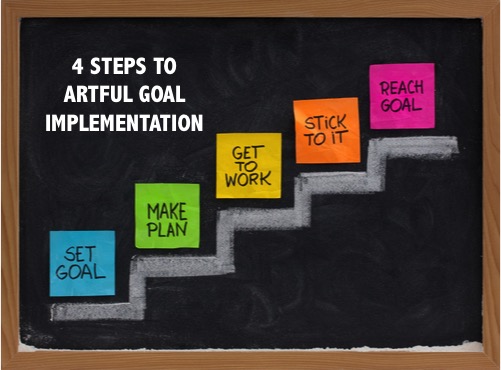Last week’s post on ecological goal setting seemed pretty well received, so thanks for the kind comments and engagement. The natural next step is to follow up that deep thinking around setting the right kind of goals for YOU, with an implementation plan. That’s what I’m going to outline here.
First a quick summary of the week that was. Alongside progressing my own goal planning work and a couple of days delivering mentoring, there was a big focus for our team on optimising occupancy across our existing SA portfolio. As many of you know, January is never the kindest month in the SA industry so even more reason to dig deep. Here are a couple of the actions that bore fruit for us this week:
1) Sent a bulk text message to 2018 guests for whom we felt would have a reason to be back in our area at some point this year (and offered a wee discount on the first night)
2) Called and emailed a selection of our best repeat guests who we knew would be returning to work on the 7th (ie the construction trade).
So, back to the implementation plan. In the last post I wrote about how to set psychologically optimised goals that are congruent ie your conscious and unconscious mind are aligned in relation to the goals you set.
In the goal setting process it’s easy to get excited in the now by writing down a big goal but the science of achievement requires us to connect the dots between a Big Hairy Audacious Goal (BHAG) and what exactly we need to be working on quarter to quarter, month on month and how we’re using our time each day.
The big rationale behind artful implementation is to take the time to do strategic planning now so that at no time during the quarter are you at the desk on a Monday morning wondering what to do to get started (or at least it will be significantly minimised).
An implementation plan prevents that brain fog, but sadly making this investing the time to create such a plan is the most common part of goal setting that people skip. It’s often looked at as too much like hard work- and you know what, it is hard mental work! Most good things do require some uphill struggle, but it’s also where we can get most clarity. I heard a brilliant quote this week from one of the greats that ties into this point, it goes;
“People have uphill hopes, but downhill habits”
– John C Maxwell
In other words, we all want the things that require ‘uphill’ efforts, but are we willing to put in the work that builds the ‘uphill habits’ that will get us there?
You need to take your BHAG and translate it into a project plan. This part of the process is uncomfortable, which is why people skip it but having a well thought through plan will keep you aligned, in the zone and knowing what you have to do next. BHAGs don’t manifest on their own, it takes real intentional work to dream them up, plan the road map, and then of course execute.
Here’s a quick summary of the process for artful implementation that I’ve been taught and continue to use each year. (Chris and I do invest multiple hours in goal planning in the opening weeks of Jan)
IT’S TIME TO BUILD THE FOUNDATION OF YOUR YEAR!
STEP #1: List your key projects
taking everything into account, list 5-20 projects that would have an immediate impact on your business. With this list you are thinking up all the growth driving activities that move you closer to achieving the BHAG (ie various strategies and tactics you want to try that would/could result in a net positive to the business).
STEP #2: Now eliminate all but 3, and ask yourself:
– are you able to complete each one in a 12 week period?
– can you complete these with your current resources ie time, people, money?
STEP #3: BUILD THE OUTLINE PLAN
Now for each project, build the outline for your implementation plan by completing a handful of answers to these 4 foundational productivity questions:
For project 1
#1 What specifically needs to happen…to get started? To continue? To finish?
#2 How can you measure progress? (ie no. of viewings/offers per week. Booking revenue, occupancy by month..) When answering these questions think about what can be ritualised/repeated.
#3 What deadlines need to happen within 12 weeks? Think it through and allocate deadlines you can put into your diary.
#4 How can you stack multiple layers of accountability onto this project. In other words, who all can you inform, involve, make a pledge to etc that will help you follow through on your promise. Think mentors, family, advisors, peers).
Do the same for Projects 2 and 3
STEP #4: 12 WEEK PROJECT PLAN
The final stage to this is creating your 12 week project plan where you literally create a grid with 84 days and then populate it with dates, specifics and deadlines (as per your answers to the Q’s above) to work to each day and week. Schedule this stuff in using the mechanisms that work for you, phone, outlook calendar, a wall chart or whatever. Allocate sufficient time and protect it in your diary.
And there you have it.

